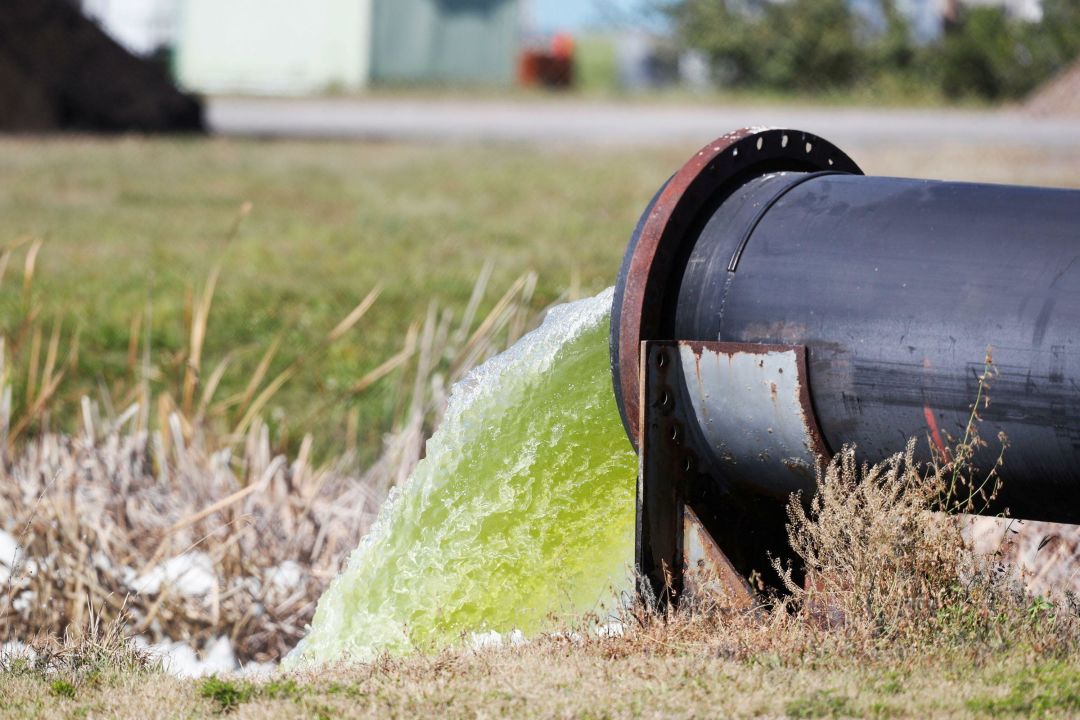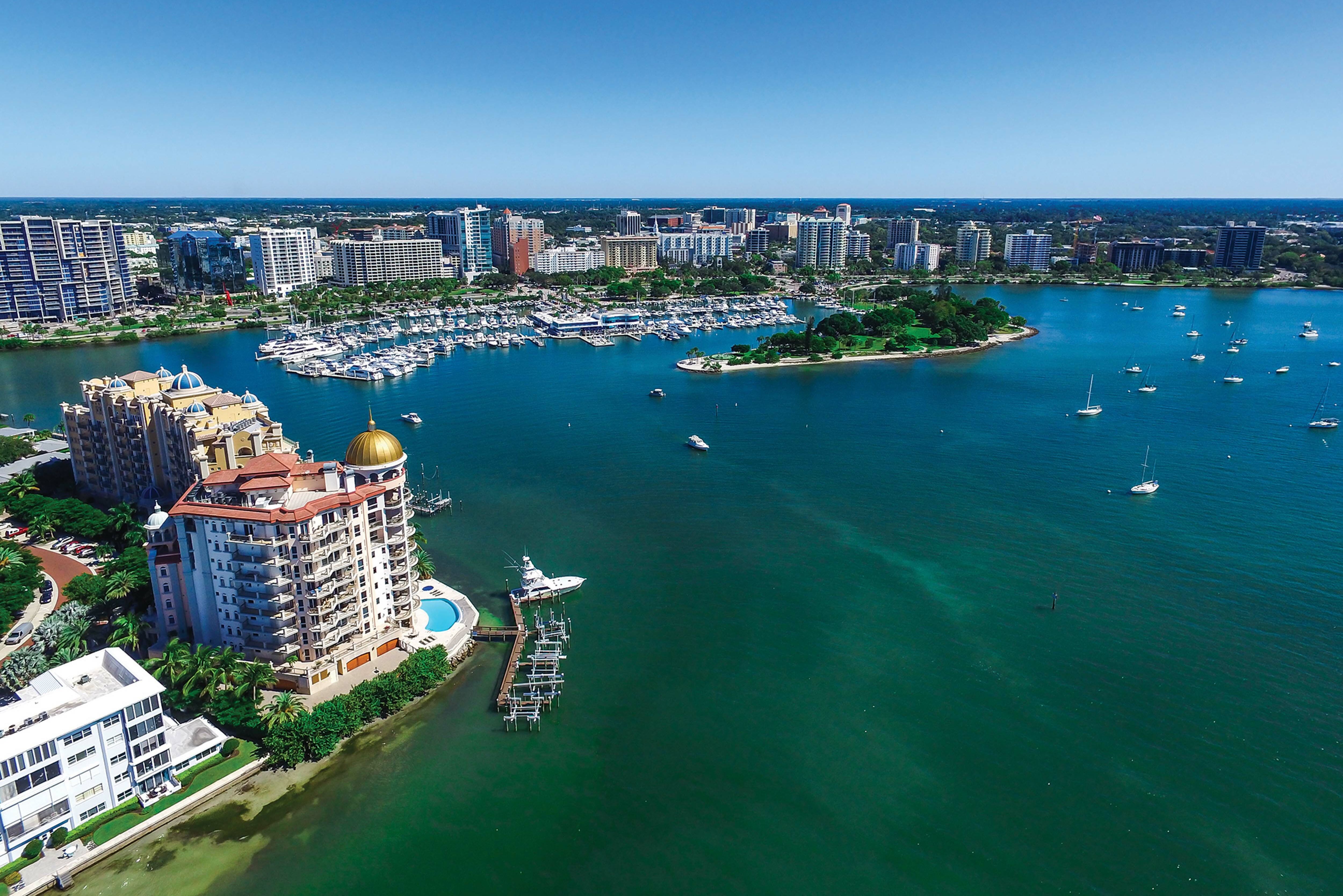Are the Public's Concerns About the Future of Piney Point Being Heard?

Polluted wastewater being drained from Piney Point in early April.
Last week, Manatee County resident Jill Gaschler sat hunched over a table in the auditorium of the downtown Bradenton public library, scribbling her thoughts on Piney Point’s future on a public comment form for the Florida Department of Environmental Protection.
Gaschler expected more of a traditional government meeting, with a public presentation and an opportunity for public comment in front of a crowd. What she found was an array of tables, a glorified poster session, with representatives from the Department of Environmental Protection and Manatee County set up to answer individual questions.
What most of the residents wanted to know was: What will happen to Piney Point?
In April, a leak in the former phosphate plant led to the discharge of more than 200 million gallons of wastewater into Tampa Bay. Since then, the solution Manatee County has come up with is injecting the remaining water at the site, now totaling roughly 555 million gallons, into a well more than 3,000 feet underground.
State officials call it “the only viable method” and Manatee County leaders argue that it’s perfectly safe. The county already has two injection wells of this type, including one that has operated for more than 30 years without a problem. But environmentalists worry that the water may still contain pollutants that could contaminate groundwater and eventually reach the area's drinking water supply.
That concern is what brought Gaschler out to last week’s meeting.
“I came out here just to be sure that the process is being considered and isn’t being rushed or done in a way that’s irresponsible,” Gaschler said. “Drinking water is everything, and the possible pollution of that would be a horror, really.”
Her comment was one of 38 left that night. The vast majority of feedback came digitally. State officials received roughly 7,000 emails on its move to issue a draft permit for a Class I underground injection control well that would store Piney Point’s remaining wastewater. Now, their job is to sift through that public comment and make a final decision.
The Department of Environmental Protection has modified or even denied permits based in part on concerns raised in public comment, according to the department's Southwest District public information manager Shannon Herbon.
But it’s not the tenor of public opinion, whether it swings towards a yes or a no, that makes a difference, said Department of Environmental Protection program manager John Coates. It’s the substance of the claims. If public comment can point out that the department's decision is inconsistent with current regulations and statutes, that holds more influence.
“The fundamental thing that is helpful is a lot of members of the public take the time and research the file and provide very valuable input, whether they’re for or against a particular project,” Coates said. “Those are the ones someone can work with and those inform the decision-making process.”
The Department of Environmental Protection isn’t required to take action by a specific date, according to Herbon, but all signs point to the agency acting soon. Department officials offered a variety of vague assessments as to when a decision might be made, from a “few” to “several” weeks.
Suncoast Waterkeeper founder Justin Bloom, one of the advocates pushing for more environmentalist involvement in Piney Point, argued that the meeting's format stifled public comment.
“I didn’t think it was very well-designed for the purpose of soliciting input,” he said. “As far as the perspective of the public, it limits engagement rather than elicits engagement.”
At the end of September, Suncoast Waterkeeper was one of five groups, including the Center for Biological Diversity and Tampa Bay Waterkeeper, to send a notice of intent to sue Manatee County for its decision to inject “toxic pollutants from the Piney Point phosphogypsum stack into the lower Floridan aquifer,” according to a news release.
“It’s putting them on notice and hopefully giving them the opportunity to consider the potential liability and their legal position and our position,” Bloom said. “We wouldn’t file that lawsuit until they actually start construction or start injecting.”
What environmentalists take issue with is not just the method of deep well injection, but what is being injected.
Manatee County’s application for the injection well classifies the remaining water at Piney Point as non-hazardous, meaning that it does not need to be treated for pollutants before being injected into the well.
“The pre-treatment strategy is not to reduce constituents to any regulatory standard as the water has been characterized as non-hazardous and is acceptable for Class I injection,” reads Manatee County’s application. “Rather, the treatment will be to assure chemical compatibility with the injection zone to avoid or limit the potential for plugging of the formation to the degree possible.”
Attached to the application are samples taken from Piney Point that show some pollutants in the water, including heavy metals and radioactive materials, but at levels not considered hazardous. Bloom wonders if that data represents all of the wastewater on the site.
“I think they are being dismissive,” Bloom said. “Unless they know a whole lot more than the public or the environmental groups that are expressing the concerns here, I don’t think that they’re making these decisions with adequate consideration.”
And if there is information that definitively proves the pollutants in all of the wastewater currently at Piney Point are at non-hazardous levels, Manatee County should be transparent with that data, according to Bloom.
When more than 200 million gallons of wastewater spewed into Tampa Bay, national attention turned to Manatee County. When a severe red tide bloom broke out along the Gulf Coast this summer, environmentalists—and many members of the public—pointed to the disaster at Piney Point.
But now, more than six months later, Bloom sees the event fading from public view. Less than 75 people signed into the Department of Environmental Protection public meeting. A meeting in April might have attracted hundreds.
“There’s still a crisis at Piney Point,” Bloom said. “Those stacks are failing, whether they are going to fail this year or next year or the year after that. I think everybody agrees that this is a very urgent issue.”



